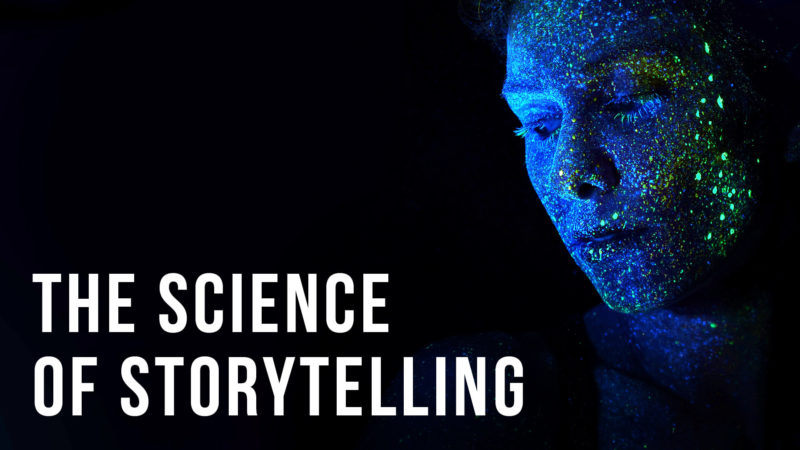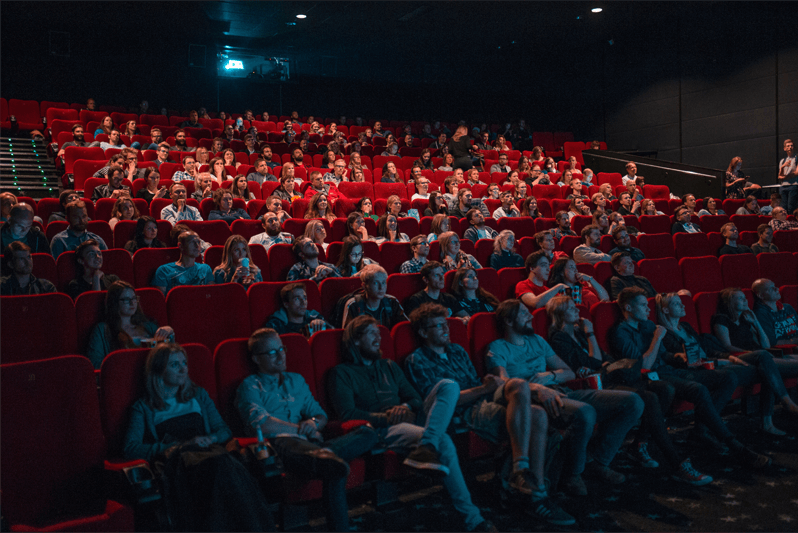The science of storytelling
The importance of storytelling has become universally accepted in today's marketing world, but why does it work so well? Contributor Peter Minnium delves into the biological underpinnings of how stories affect us.

“Storytelling” has become an industry buzzword that’s bandied about in client meetings and marketing conferences. Spurred on by a flurry of articles and think pieces, we are captivated by the promise of greater engagement, retention and influence.
The “why” of storytelling, however, remains elusive; we are left in the dark as to how this rediscovered messaging tool works. In this column, I’ll remedy that with some scientific explanations.
Stories are all about movement
Simply put, stories are instruction manuals that explain how we get from Point A to Point B; the key here is movement from one state of being to another.
Ancient fables warn us that if we are arrogant or greedy, we may end up worse than we began, while epic poems celebrate heroism and dedication, guiding us from a difficult present to a better future — from beginning to end.

In expressing this movement, stories help us visualize how we can improve our own lives or avoid an unpleasant fate. In addition to the “how,” stories also provide us with a “why.” By imagining ourselves living out the consequences of certain choices, we are inspired to act in a certain way. It is far easier, after all, to change our behavior if we have a clear goal to move toward.
In a 2014 study, researchers Keith Quesenberry and Michael Coolsen shed some light on the import of this movement for ad performance. Their research showed that the dramatic tension created by a complete plot is instrumental to keeping audiences entertained and engaged. Elements like humor or sex appeal, on the other hand, had no correlation to ad effectiveness.
Quesenberry and Coolsen compared the “likability” of over 100 Super Bowl ads to the number of “acts” each contained. They found that ads were more likable, and thus more likely to be watched and shared if they led the audience through all five points of an archetypal dramatic plot arc. In doing so, they confirmed the power of stories to maintain audience attention and drive action.
A good story moves us, too
Intuitively, though, we know that there is something more to stories. A good story can send us into fits of laughter or bring us to tears. Our bodies tense when dramatic music echoes through a dark corridor in a horror movie, and we are flooded with relief when the hero dangling from a cliff is pulled to safety. Psycholinguists call this experience transportation.

Transportation allows us to vicariously experience a story’s movement through its characters. When we read a gripping novel or watch an exciting movie, we are drawn into the action, effectively transported into the fictional world of the story. The characters’ struggles, and their rewards, become our own. But what is it exactly that makes stories so compelling?
A series of experiments conducted by neuroeconomist Paul J. Zak may hold the answer. Zak’s research has focused on the role of oxytocin, a neurotransmitter that Zak has dubbed the “neurological substrate for the Golden Rule.” When we are treated with trust or kindness, our brain releases oxytocin, which then encourages us to reciprocate this prosocial behavior.
Good stories catch your eye, draw you in and move you to action
Zak’s experiments shed light on three important stages of our relationship with stories: attention, connection and action. Of these, the role of attention in storytelling is already well understood. Because it is a scarce resource, we will only focus our attention on those things that seem significant, and stories that don’t capture our attention will fail to deliver their message.

In one of his experiments, Zak measured participants’ heart rate and sweat production while they watched short videos. Using these metrics, he was able to track the ebb and flow of attention throughout the course of each story. He found that when plots built up suspense in anticipation of a climax, participant attention increased significantly.
An increase in oxytocin production closely followed this uptick in attention, which peaked shortly after the stories reached their climax. As the characters on screen encountered and overcame conflicts, participants who remained engaged with the story experienced elevated levels of oxytocin. This allowed them to empathize with the characters, and to share their journey.
Beyond immersing participants in the story, the release of oxytocin quantifiably impacted their decision-making. Together with attention, oxytocin levels were positively correlated with participants’ willingness to donate money to “help” the characters on screen. Zak found that these two metrics predicted subsequent charitable behavior with 82 percent accuracy.
Zak confirmed the link between oxytocin and empathy by showing participants a series of PSAs after administering oxytocin to one of the experimental groups. Those participants who were given oxytocin reported much higher levels of concern for the fictional characters on screen than the control group and were also much more likely to act on these feelings.
Metaphors are the most basic stories
While the dynamism of a story’s plot is a critical component of its communicative power, it would be naive to neglect the story’s content. From Zak’s research, we learn that our brains respond to plot movement in disagreeable stories (think “Schindler’s List”) in the same way they react to more upbeat stories, but we learn little about a more primary movement: metaphor.
“Metaphor” is derived from an Ancient Greek word that means “to transfer.” Like mini-stories, metaphors encode complex ideas in an often visceral package. We intuitively use metaphors to describe how we feel (e.g., “I had a rough day.”), but until recently, we did not understand why the use of figurative imagery was such an engaging way to express ideas.

Fortunately, some recent neuroimaging (fMRI) experiments have begun to reveal what makes metaphors so gripping. Though each was conducted independently, together they show that we process metaphors with sense or motor imagery (e.g., “I saw the light” or “I ran out of time”) in terms of those physical experiences, rather than as typical parts of speech.
In one study, participants were asked to read scent-related words like “jasmine” or “cinnamon,” while in another they listened to textural metaphors like “it was smooth sailing.” In a third, participants read words and phrases that described physical movement. In all studies, participants were also exposed to “neutral” expressions that acted as a control.
In every experiment, researchers found that when participants were exposed to sense or motor words, their corresponding sense or motor cortices were activated alongside their language cortices. Neutral words or phrases did not elicit a similar response, confirming the link between our processing of physical experiences and the metaphors that refer to them.
Stories make ideas real for their audience
Oxytocin makes stories come to life by building empathic connections between the audience and the characters they experience. The same parts of our brain that we use to smell or to wave also help us understand the words we use to describe those experiences. While these mechanisms are different, they both contribute to the expressive power of stories.

These neurological insights emphasize the significance of dramatic tension and a complete plot, and they hint at the value of using visceral imagery. Most importantly, they bring much-needed substance to the storytelling conversation. In confirming our intuitions about its essential qualities, they have plotted a course toward greater understanding of effective communication.
Contributing authors are invited to create content for MarTech and are chosen for their expertise and contribution to the martech community. Our contributors work under the oversight of the editorial staff and contributions are checked for quality and relevance to our readers. MarTech is owned by Semrush. Contributor was not asked to make any direct or indirect mentions of Semrush. The opinions they express are their own.
Related stories
New on MarTech